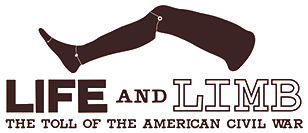
Class 6: Where is the Violence at Civil War Battlefields?
Introduction:
This final class is designed to explore the ways that Americans remember and portray the killing fields of the Civil War. How historical sites interpret the legacy of violence is the central line of inquiry, for it exposes the contradictions of what Americans want from their Civil War past. Above all else, the public desires to visit battlefield parks as sacred spaces where honoring the sacrifice and heroism of soldiers occurs without any discussion of the horrors of war. This class pivots around the key assumption in America that we, as a people, display our true character in war—that we rise above the murderous hatred of killing and are somehow exempt from the barbaric consequences of civil strife. Students will begin by reading David Blight’s essay as a way to understand the historical perspective on Civil War battlefields as places of healing and reconciliation, where killing occurred between American brothers rather than bitter enemies. Blight’s piece should be followed by Edward Linenthal’s article, which exposes students to the ways that Americans have found war as a redemptive experience after visiting Gettysburg. Students should conclude this class by discussing the Civil War veteran address given by the association of the First Michigan Infantry at Gettysburg. This document will help students access the influence of Civil War veterans on the ways the American public makes meaning of organized violence.
Readings:
Primary:
Spencer, Clinton. “Address of Capt. Clinton Spencer.” In Michigan at Gettysburg: July 1, 2, 3. Detroit: Winn & Hammond, 1889.
Secondary:
Blight, David. “Healing and History: Battlefields and the Problem of Civil War Memory.” In Beyond the Battlefield: Race, Memory, and the American Civil War. Amherst: University of Massachusetts Press, 2002, Chap. 8.
Linenthal, Edward Tabor. “A Joint and Precious Heritage: Gettysburg.” In Sacred Ground Americans and Their Battlefields. Urbana and Chicago: University of Illinois Press, 1991, Chap. 3. 5.
Discussion Questions:
- Blight insists that “healing and justice” have occupied a contentious relationship in the American mind when it comes to Civil War commemorations. How did healing win out according to Blight, and what have been the long-term consequences on the ways that Americans remember the Civil War?
- Why does Linenthal believe that the violence of the Civil War has seduced so many Americans to look at their past through a romantic lens? Are we still mired in the sticky residue of the sentimental culture that pervaded the Civil War years? Why hasn’t the bloodletting of the Civil War shocked American sensibilities the way that World War I and World II have in Europe?
- What lessons did the veterans of the First Michigan Infantry want to impart to future generations? In what ways does this speech correspond to or challenge the conclusions of Blight and Linenthal?
- When the inhumanity of war is forgotten—as Blight and Linenthal argue—collective amnesia settles upon us as a people. When the memory of the Civil War is cleansed of violence and the political stakes of the war and emancipation are minimized, we confront more than bad history or a loss of authenticity. We lose opportunities at finding a usable past for students and general audiences. How can the evolutions in Civil War memory help us consider contemporary issues in the classroom and at historical sites?


